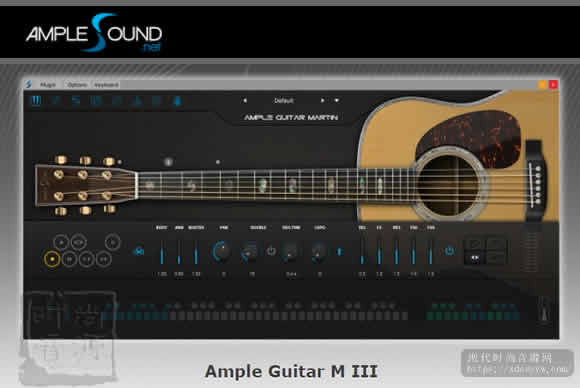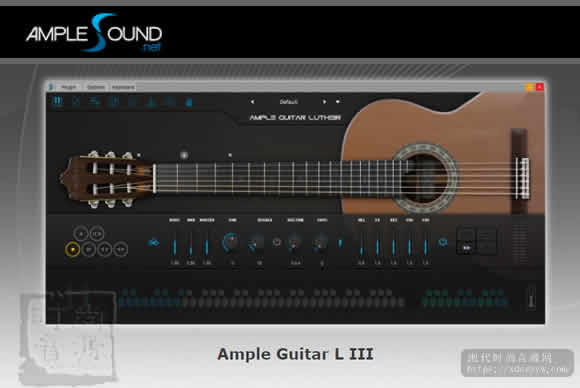![图片[1]-Producertech Producers Guide to Neoverb [TUTORiAL] | 音色插件资源网-音色插件资源网](https://www.yinsebar.com/wp-content/uploads/2021/01/image-386.png)
DECiBEL团队| 2020年12月14日| 1.03 GB
iZotope的Neoverb是一个尖端插件,将Michael Carnes(以前是Lexicon和Exponential Audio的)的混响算法与iZotope闻名的用户友好功能集和直观GUI结合在一起。除了提供用于设置插件的多种辅助功能外,引擎盖下还有许多高级控件,可以使声音完全自定义。在这个2小时的课程中,您将学习插件的每个部分,并学习如何使用它从头开始设计自己的混响。
该课程从一个模块开始,该模块贯穿了与Neoverb合作的基础知识,介绍了助手和预设管理器,并对软件的主要领域进行了介绍。随之而来的是对混响组成的图解说明,以帮助理解每个阶段和反射的总体时间。在本教程之后的是本教程,探讨了将Neoverb作为插入或发送使用的注意事项,并展示了几种在DAW中设置并行混响处理的方法。
涵盖了基础知识之后,将对该软件的每个部分提供更详细的指南,探讨EQ和Pre-Delay,以及高级编辑面板中的众多选项。最后两个模块都显示了完整的工作流程,并从头开始使用两种对比鲜明的音乐源来设置Neoverb:鼓和人声,因此学生们将获得该软件能够实现的各种定制混响设计的实用示例。
课程细分
模块1-插件
的主要区域Rob提供了插件的主要区域的概述,涵盖了加载预设与使用助手,使用混合板,应用均衡器以及如何更新和保存新预设之间的差异。第2课还包括混响的图解说明!
第1课-加载预设vs混响助手-9.39
第2课-使用混合板-12.46
第3课-均衡器概述-5.41
第4课-编辑和保存预设
-6.58模块2-使用新动词作为插入vs发送
设置指南将Neoverb作为插入或发送效果,解释了每种方法的优缺点,包括使用并行混响处理的Live-specific和通用DAW技术。
11.45第
3单元-均衡器的重点
在使用低音提琴乐器的同时,详细介绍Neoverb的EQ部分。涵盖了手动均衡器技术,以及使用了自动剪切和取消遮罩功能。
14.20
模块4-预延迟和平滑
转到conga,Rob给出了“平滑”和“预延迟”控件的指南,展示了后者对混响的整体持续时间和空间感的影响。还演示了预延迟同步功能。
第1课-平滑-6.58
第2课-预延迟-7.36
模块5-高级混响控件
Rob从头开始构建鼓混响,Rob演示了高级编辑面板中可用的各种控件,包括时间,大小,扩散,角度和单独的音调控件。设置好空格后,便会应用EQ完成预设。
第1课-早期思考-9.55
第2课-中混响-9.58
第3课-长混响-11.19第
6单元-完整的工作流程:使用人声
在最后一个模块中,Rob从头开始创建另一个混响,这次使用人声。板动词和礼堂模拟与一些超宽和透明的早期反射相结合,以产生郁郁葱葱且变化多样的预设,以将混响添加到人声中。
18.12
Team DECiBEL | 14 December 2020 | 1.03 GB
iZotope’s Neoverb is a cutting edge plugin, combining the reverb algorithms of Michael Carnes (formerly of Lexicon and Exponential Audio) with the user-friendly feature set and intuitive GUI that iZotope have become famous for. In addition to offering several assistive facilities for setting up the plugin, there are many advanced controls under the hood that allow complete customisability of the sound. On this 2-hour course, you’ll be taken through each part of the plugin and learn how to use it to design your own reverbs from the ground up.
The course begins with a module that runs through the very basics for working with Neoverb, looking at the assistant and preset manager, as well as giving an intro to the main areas of the software. Accompanying this is a diagrammatic explanation of what constitutes reverb, to help with understanding each stage and the overall timing of reflections. Following this is a tutorial that talks through the considerations for working with Neoverb as an insert or a send, showing a few different ways for setting up parallel reverb processing in the DAW.
Once the basics are covered, there are more detailed guides to each section of the software, exploring EQ and Pre-Delay, and the numerous options available within the advanced editing panel. The last 2 modules both show complete workflows, setting up Neoverb from scratch with 2 contrasting musical sources: drums and a vocal, so students have practical examples of the kinds of custom reverb design the software is capable of.
Course Breakdown
Module 1 – Main Areas of the Plugin
Rob provides an overview of the main areas of the plugin, covering the differences between loading presets and using the assistant, working with the blend pad, applying EQ and how to update and save a new preset. Lesson 2 also includes a diagrammatic explanation of reverb!
Lesson 1 – Loading Presets vs Reverb Assistant – 9.39
Lesson 2 – Using the Blend Pad – 12.46
Lesson 3 – EQ Overview – 5.41
Lesson 4 – Editing and Saving a Preset – 6.58
Module 2 – Using Neoverb as an Insert vs Send
A guide to setting up Neoverb as an insert or send effect, explaining the pros and cons of each, including Live-specific and universal DAW techniques for applying parallel reverb processing.
11.45
Module 3 – EQ Focus
A detailed look at the EQ section in Neoverb, whilst working with a double bass instrument. Manual EQ techniques are covered, as well as using the Autocut and Unmasking features.
14.20
Module 4 – Pre-delay and Smooth
Moving on to the conga, Rob gives a guide to the Smooth and Pre-Delay controls, showing the impact the latter makes on overall duration and spaciousness of the reverb. There is also a demonstrations of the pre-delay sync’ing feature.
Lesson 1 – Smooth – 6.58
Lesson 2 – Pre-Delay – 7.36
Module 5 – Advanced Reverb Controls
Building a drum reverb from the ground up, Rob demonstrates the various controls available within the advanced editing panel, including time, size, diffusion, angle and individual tone controls. Once the spaces are set up, EQ is then applied to finish off the preset.
Lesson 1 – Early Reflections – 9.55
Lesson 2 – Medium Reverb – 9.58
Lesson 3 – Long Reverb – 11.19
Module 6 – Complete Workflow: Working with a Vocal
In this final module, Rob creates another reverb from scratch, this time working with a vocal. Plate verb and hall simulation are combined with some ultra-wide and transparent early reflections, to produce a lush and varied preset for adding reverb to your vocals.
18.12


![[三体中国民乐全套 效果器合集] 古风中国风编曲必备 R2R [WiN, MacOSX](40GB+)稳定运行版本-音色插件资源网](https://www.audioba.com/wp-content/uploads/2024/12/20240725195002777-QQ_1721908198947-734x550-1.png)

![[最新Ample吉他3代音色免安装25套合集]Ample Guitar Bass v3.7.0 [WiN, MacOSX](77.1GB+)-音色插件资源网](https://www.audioba.com/wp-content/uploads/2024/11/ample-sound.jpeg)
![[智能自动编曲软件 ]band in a box 2024 中文汉化完整版+安装方法 [WiN](201GB+)-音色插件资源网](https://www.audioba.com/wp-content/uploads/2024/10/Band-in-a-Box-10.jpg)










